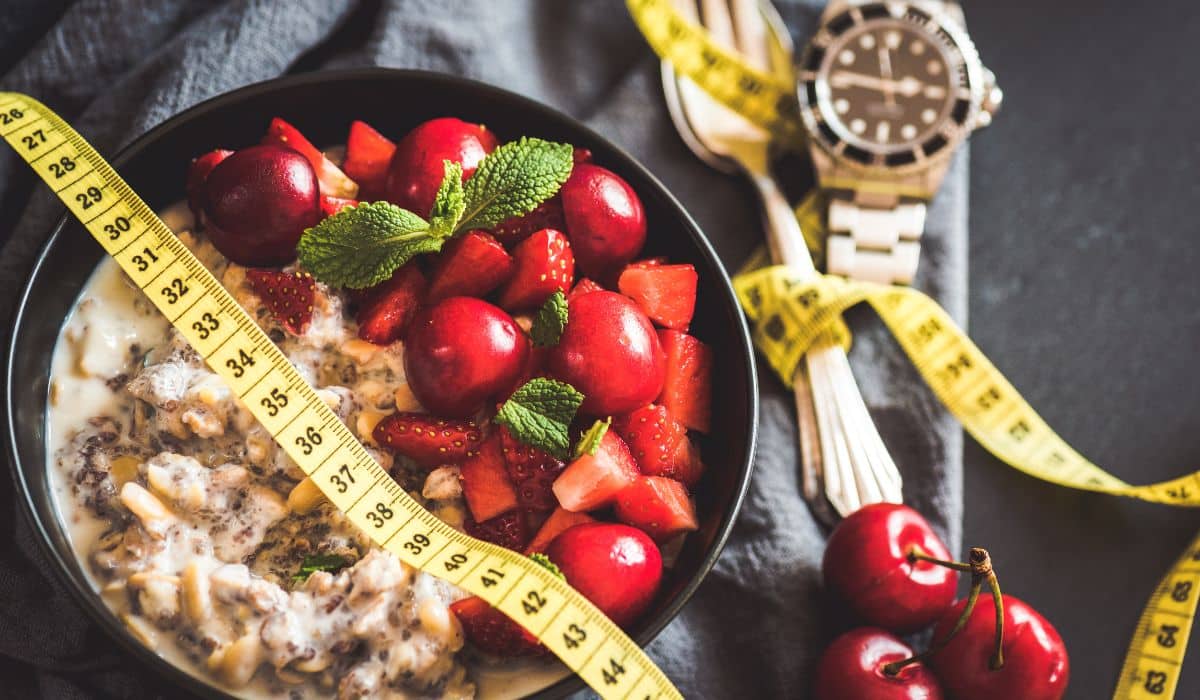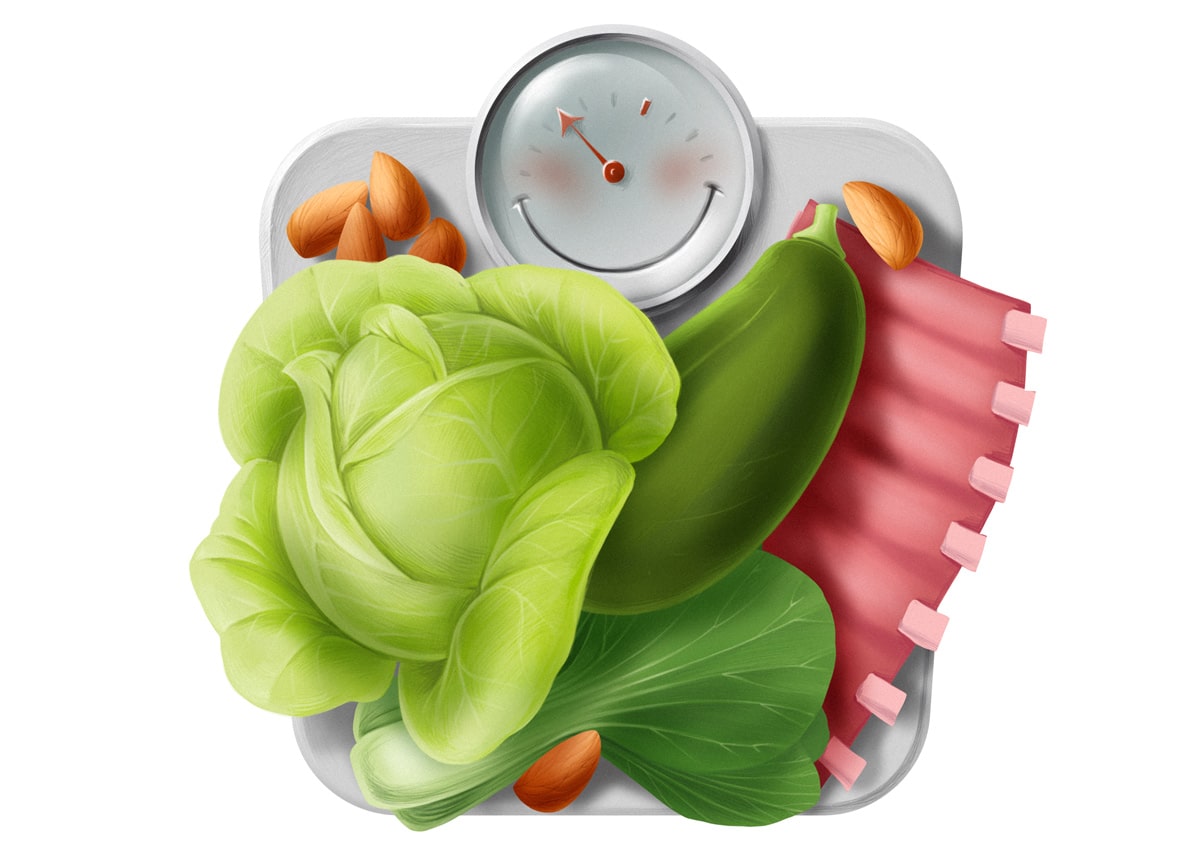
Limiting your total food intake to just one meal a day (abbreviated OMAD) is the cool new trend in meal scheduling - but what's the actual research behind it? As it turns out, most of the studies in support of one meal a day are actually on something a bit different: periodic one-meal days in the context of a more typical eating schedule.
Here's a look at both styles of eating and how they stack up to plain old breakfast, lunch, and dinner for weight loss (note that there’s also a lot of research on meal timing and cancer, inflammation, autoimmune disease, and all kinds of other cool stuff - that’s not here in the interest of space, but might be in a future post!)
One meal a day: every day, or just sometimes?
One meal a day, every single day, is essentially an extreme version of intermittent fasting: instead of a typical feeding window between 6 and 8 hours, you just compress it down to an hour or so for your single meal.
One big argument for this from a Paleo perspective is that it’s closer to an actual hunter-gatherer eating patterns. It seems plausible that hunter-gatherers in the Paleolithic wouldn’t have stuck to a strict schedule of 3 meals per day: modern hunter-gatherers certainly don’t. But on the other hand, what’s the evidence that they stuck to a strict schedule of exactly 1 meal per day?
More importantly, Paleo is about learning from evolutionary history, not caveman make-believe: what’s the evidence that an OMAD-style eating pattern actually improves health? There just haven’t been a lot of studies on this, and the ones that exist are ambiguous.
But if you're a little more flexible, there do seem to be clear benefits to occasional one-meal days within an otherwise typical eating pattern. That’s where most of the research is, including most of the studies used to support OMAD. These studies don’t have people eating one meal a day every single day, with that single meal providing a full day’s worth of food. Instead, they use intermittent calorie restriction: a couple days of normal eating (3 meals a day, plus snacks), then one day of semi-fasting with only one normal-sized meal.
In other words, on their one-meal days, they’re not trying to cram an entire day’s worth of food into a single meal: they’re dramatically changing their meal timing and reducing food intake for that one day only, then going back to normal.
With that clarified, take a look at the research on “pure” OMAD (one meal every day) and intermittent restriction (1-3 days per week of just one meal).
OMAD and weight loss: it’s complicated.
The short take: with equivalent calorie restriction, meal frequency doesn’t have a huge effect on weight loss. But if tinkering with meal frequency is the strategy that lets you painlessly reduce calories, then regularly or occasionally eating one meal a day might be really helpful. Also, intermittent calorie restriction might help with a healthier pattern of weight loss.
The weight-loss benefits of always eating just one meal per day are murky at best. This review paper analyzed 11 studies on different meal frequencies, from 1 to 6 meals per day. The researchers found only one study showing any significant difference in weight loss: this one. In that study, the researchers compared 2 meals per day to 6 meals per day in obese women. The 6 meal group lost a little bit less weight, but they kept a little bit more of their muscle mass. The 2 meal group lost more weight, but more of it was muscle. This was a pretty small study - just 11 people - but it suggests an interesting trade-off between speed and quality of weight loss.
The authors of the review paper suggested that if more frequent meals really does help you keep more muscle, it might be due to protein metabolism - your body can only use 20-40 grams of protein at once for muscle building so if you want to get the best value out of every gram of protein, it’s best to spread it out into different doses.
If you’re looking at intermittent calorie restriction, studies in human subjects are more plentiful and results are more promising. this study found that, as long as calories were constant, intermittent calorie restriction (two days per week) and chronic restriction had no difference. On the other hand, intermittent calorie restriction may be better than chronic restriction for visceral fat loss. Visceral fat, aka “belly fat,” is the really dangerous kind of body fat, so losing more of this is a real advantage.
Either one is probably helpful it if helps you limit calories
So there doesn’t seem to be an enormous benefit to meal timing if calories are held constant because some scientist in a lab coat is providing all your food. But obviously in the real world, this doesn’t happen: people struggle a lot to restrict calories, and tweaking meal frequency is a creative way to make that happen. If restricting your food to one meal a day (either every day, or just a few days a week) allows you to successfully reduce calories in the real world, then it’s a huge benefit.
This study suggests that even with unrestricted eating the other 5 days, 2 days per week of OMAD can still be enough to trigger this effect and cause weight loss.
To sum up: there isn’t a lot of evidence on “pure” OMAD vs. intermittent restriction. But a few studies suggest that intermittent restriction might be better for losing visceral fat and avoiding muscle loss. And it can help create a kind of automatic calorie restriction without the need to actually count calories (which doesn’t work). So definitely something to think about.
Indirect benefits for weight loss
Another way to compare diet strategies is to consider how they affect things like insulin sensitivity or metabolic rate. These things aren’t the same as weight, but realistically speaking, addressing them should be helpful for weight loss.

OMAD and metabolic rate
Digestion contributes quite a bit to your daily calorie burn, but most studies (like this one) show that it’s the total amount of food, not the timing of when you eat the food, that matters. But some studies do show a small benefit for eating fewer and larger meals, rather than bigger and fewer meals. This runs counter to that old chestnut about 6 meals a day to stoke the metabolic fires, but it’s a point in favor of OMAD-style eating.
OMAD, insulin sensitivity, & carb tolerance
A couple of studies have also found that alternate-day fasting and intermittent energy restriction improve insulin sensitivity and metabolic health even more effectively than chronic calorie restriction. For example, this one found that 2 days a week of food restriction was way better than chronic calorie restriction for insulin sensitivity in overweight women. But again, this wasn’t “pure” OMAD.
If anything, research on “pure” OMAD suggests that it's not ideal. Take one of the few studies of one meal a day, every day: this study, in mice. The researchers studied two different eating patterns: breakfast only, or breakfast + dinner. The breakfast only mice didn’t do so well:
“Mice on one meal exhibited an increase in body weight gain, hyperinsulinemia, hyperleptinemia, and a decrease of gene expression associated with β-oxidation in adipose tissue and liver compared with those on two meals.”
On the other hand, the researchers in the mouse study explained a significant amount of the difference as being due to higher insulin levels in the one-meal group. These mice were eating a pretty high-carb diet (40% fat, 60% carbs + protein), so that insulin effect might not apply for keto folks.
The bottom line: mouse studies are always a bit dicey, and one mouse study isn’t a reasonable basis to draw sweeping conclusions from, but it’s worth keeping an eye out for insulin issues on a “pure” OMAD-style diet.
But isn’t an irregular eating schedule associated with obesity?
It’s true that irregular eating patterns are associated with higher weight in the general population, but that’s because most people in the typical population who eat irregular meals do it like this:
- Breakfast: Red Bull
- Lunch: no lunch, but nibbled from the candy jar at work all morning.
- 3pm snack: donut
- Dinner: entire pizza with garlic knots and a brownie.
- Midnight snack: Oreos
No kidding, this style of “irregular meals” is bad for your health. But it’s completely different from eating a well-designed Paleo diet with occasional days of semi-fasting with just one big meal. in people trying to eat well and lose weight, intermittent restriction is, if anything, a bit better.
Summing it Up
There isn’t actually a lot of evidence for eating one meal a day, every day. It might be great and individual people definitely have success with it, but the science is pretty thin on the ground. In 10 years, maybe we’ll have ironclad evidence that it’s the best thing since prepackaged zucchini noodles. But right now, there isn’t a huge amount of research-based guidance to give.
But there is quite a bit of evidence in favor of occasionally including one-meal days in your life. Various studies have shown benefits for visceral fat loss, insulin sensitivity, and overall weight loss, particularly in the real world where it’s hard to make calorie restriction work. It’s worth considering and maybe trying for a week or two, especially if you’re struggling to break through a plateau.





Leave a Reply